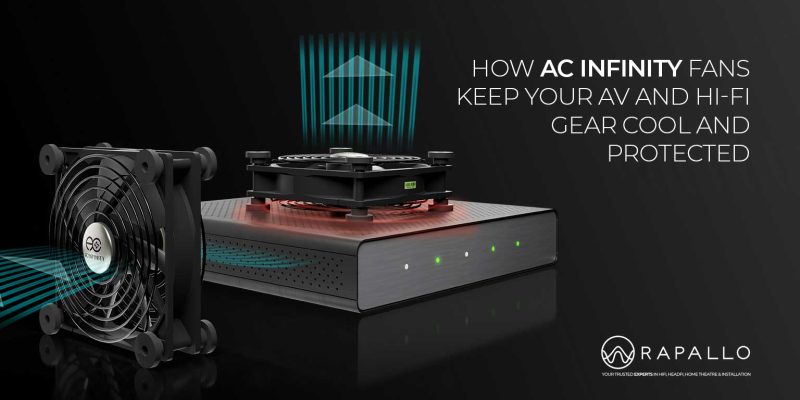
Chip DACs vs. Ladder DACs
Chip DACs vs. Ladder DACs: A Deep Dive into Digital-to-Analog Conversion
Estimated reading time: 7 minutes
In the digital age, analog outputs still matter. Whether you’re enjoying high-fidelity music, sensing voltages in a control system, or designing precision instrumentation, converting digital signals into analog voltages is a critical step. At the heart of this process lies the Digital-to-Analog Converter (DAC). But not all DACs are created equal. In this blog, we’ll explore two major types: Chip DACs and Ladder DACs—highlighting their architectures, strengths, weaknesses, and ideal use cases.

What Is a DAC?
A DAC (Digital-to-Analog Converter) transforms digital information (usually binary data) into a continuous analog signal. This is essential in countless applications—audio playback, industrial controls, instrumentation, telecommunications, and more. DACs come in many forms, but two primary types dominate the discussion: Chip DACs and Ladder DACs.

Chip DACs: Integrated and Versatile
What Are Chip DACs?
Chip DACs refer to monolithic, integrated circuits that perform digital-to-analog conversion. These are self-contained devices, typically available in small surface-mount packages, and include the conversion logic, reference voltages, output buffers, and sometimes even filters.
Architecture Overview
Most chip DACs use one of several internal architectures:
- Binary-Weighted Resistor DAC
- R-2R Ladder DAC (yes, some chip DACs use ladder structures internally)
- Delta-Sigma DAC (common in audio applications)
- Current-Steering DAC (used in high-speed applications)
Each architecture suits different performance criteria, such as speed, resolution, linearity, or noise floor.
Key Advantages
- Integration and Compact Size – Being integrated circuits, chip DACs are extremely compact and convenient for modern PCB layouts. They eliminate the need for external resistor networks, calibration, and temperature compensation.
- High Resolution and Precision – High-end chip DACs can offer resolutions of up to 32 bits (especially in audio DACs), with exceptional signal-to-noise ratios (SNR), low total harmonic distortion (THD), and excellent linearity.
- Temperature Stability – Modern chip DACs are temperature-compensated and fabricated with matched components, yielding much better thermal drift characteristics than discrete resistor-based ladder DACs.
- Low Power Consumption – Especially with delta-sigma architectures, chip DACs can achieve high precision with relatively low power draw.
- Versatility – Chip DACs are available for a wide range of applications—audio (e.g., ESS Sabre, AKM, Cirrus Logic), industrial control (Analog Devices, Texas Instruments), and high-speed telecom (Maxim, Linear Tech).
Limitations
Black-box design
Internally complex, often difficult to modify or optimize
Latency
Delta-sigma DACs, for instance, introduce filtering delays that may not be acceptable in real-time systems.
Output Drive Limitations
Some chip DACs require output buffering for driving heavy or capacitive loads.

Ladder DACs: Simplicity, Speed, and Transparency
What Are Ladder DACs?
Ladder DACs—often R-2R resistor ladders—are a type of DAC built using a simple and elegant resistor network. They are commonly constructed using discrete components or in programmable logic (like FPGAs), making them appealing for certain DIY, hobbyist, or specialized industrial use cases.
Architecture Overview
An R-2R Ladder DAC is based on a repetitive structure using resistors of only two values: R and 2R. Binary-weighted digital inputs are applied to switches connected to the ladder, and the resulting voltages sum to produce an analog output proportional to the digital input.
Key Advantages
- Simplicity – An R-2R ladder DAC is conceptually and physically simple. It’s ideal for understanding DAC principles and can be built from just resistors and switches (like CMOS logic or microcontroller GPIOs).
- Speed – Because of its inherently parallel nature and low latency, an R-2R ladder can operate at very high speeds, making it useful in real-time applications like waveform generation or video synthesis.
- Customization – Engineers can tweak performance by selecting high-precision resistors, tailoring voltage references, and optimizing layout for specific applications. Unlike chip DACs, there’s full visibility into the circuit.
- Low Cost (in some cases) – In simple systems, especially for educational or low-resolution tasks, ladder DACs can be cheaper than purchasing a commercial DAC chip.
Limitations
Poor Accuracy and Resolution
The main drawback of discrete ladder DACs is that resistor tolerances (e.g., 1%, 0.1%) directly affect the linearity and accuracy. Achieving more than 8-bit resolution reliably is difficult without extremely precise and matched components.
Temperature Drift
Discrete resistors have temperature coefficients, and since they are not thermally matched like those on a silicon die, performance degrades with temperature changes.
No Integrated Features
Unlike chip DACs, ladder DACs lack built-in buffers, voltage references, or calibration logic. Everything must be designed manually, increasing complexity for high-performance implementations.

Performance Comparison
| Feature | Chip DACs | Ladder DACs |
|---|---|---|
| Resolution | 8–32 bits | 4–10 bits (typical), 12+ bits difficult |
| Speed | Moderate to high (depends on architecture) | High (especially parallel) |
| Linearity | Excellent in high-end models | Poor to moderate |
| Temperature Stability | High | Low |
| Integration | High (often includes buffers, refs) | None |
| Cost | Low-to-high (depending on precision) | Low for low-bit DIY, high for precision |
| Customizability | Limited | High |
| Latency | Medium to high (especially delta-sigma) | Very low |
| Use Case Fit | Audio, industrial, instrumentation | DIY, learning, high-speed waveform generation |

Use Case Scenarios
High-Fidelity Audio Playback
Winner: Chip DAC
Modern audio DACs like the ESS Sabre32 or AKM Velvet Sound offer high SNR (>120 dB), ultra-low THD+N (<0.0001%), and up to 32-bit resolution. A ladder DAC would struggle to match even 16-bit CD quality without expensive laser-trimmed resistors and thermal management.
Microcontroller Signal Generation (e.g., Arduino)
Winner: Ladder DAC
An 8-bit R-2R DAC connected to GPIO pins can generate analog voltages without additional ICs. For basic sound, waveform generation, or motor control, it’s cheap, fast, and easy to implement.
Data Acquisition Systems
Winner: Chip DAC
High-speed, high-resolution DACs like those from Analog Devices or TI offer differential outputs, SPI/I²C control, and built-in calibration—perfect for precision lab instruments or industrial control systems.
Retro Computing & Video Synthesis
Winner: Ladder DAC
Vintage computers used ladder DACs to output video and audio due to simplicity and speed. In modern hobbyist retro projects or analog synths, they’re still ideal due to minimal latency and low complexity.
Hybrid Approaches
Interestingly, not all systems are strictly one or the other. Some engineers design hybrid DACs—using ladder architectures inside an ASIC or leveraging an R-2R network externally but buffering it with an op-amp stage for better linearity.
Some chip DACs internally use R-2R ladders fabricated on silicon with laser-trimmed resistors for accuracy, combining the best of both worlds.

Conclusion: Choosing the Right DAC for the Job
When deciding between a Chip DAC and a Ladder DAC, consider your application, performance needs, budget, and complexity tolerance.
- Choose a chip DAC if you need high precision, temperature stability, and ease of integration. Perfect for audio, measurement, and industrial systems.
- Choose a ladder DAC if you need high speed, low cost, or maximum control—ideal for simple waveforms, educational use, or niche retro tech applications.
Both technologies serve important roles in modern electronics. While integrated chip DACs dominate the high-performance and consumer markets, the simplicity and speed of ladder DACs keep them relevant in many real-time, experimental, and educational scenarios.
Contact the team (CJ & Bensan) to discuss your requirements and system.
- Open-Back vs Closed-BackAh, headphones and Open-Back vs Closed-Back… Your loyal companions through late-night jam sessions, endless Zoom calls, and those “I’m totally…
- Our Guide to Buying a CD PlayerOur Guide to Buying a CD Player. What to look for in today’s market and why CD Players still matter.…
- The Moving Coil Cartridge: History, Design, and Why It Still Reigns SupremeVinyl playback is a ritual. From lifting the record out of its sleeve, to lowering the stylus onto the spinning…
- How AC Infinity Fans Keep Your AV and Hi-Fi Gear Cool and ProtectedHow AC Infinity Fans Keep Your AV and Hi-Fi Gear Cool. When you invest in a high-performance home theatre or…
- Chip DACs vs. Ladder DACsIn the digital age, analog outputs still matter. Whether you’re enjoying high-fidelity music, sensing voltages in a control system, or designing precision instrumentation, converting digital signals into analog voltages is a critical step.
- Are Blu-ray Players Still Worth It in 2025?This week we discuss Are Blu-ray Players Still Worth It in 2025? In an age where digital streaming dominates entertainment, the humble Blu-ray player often seems like a relic of the past. But in 2025, despite the surge in subscription services and cloud-based content, Blu-ray players remain relevant—and for good reason





